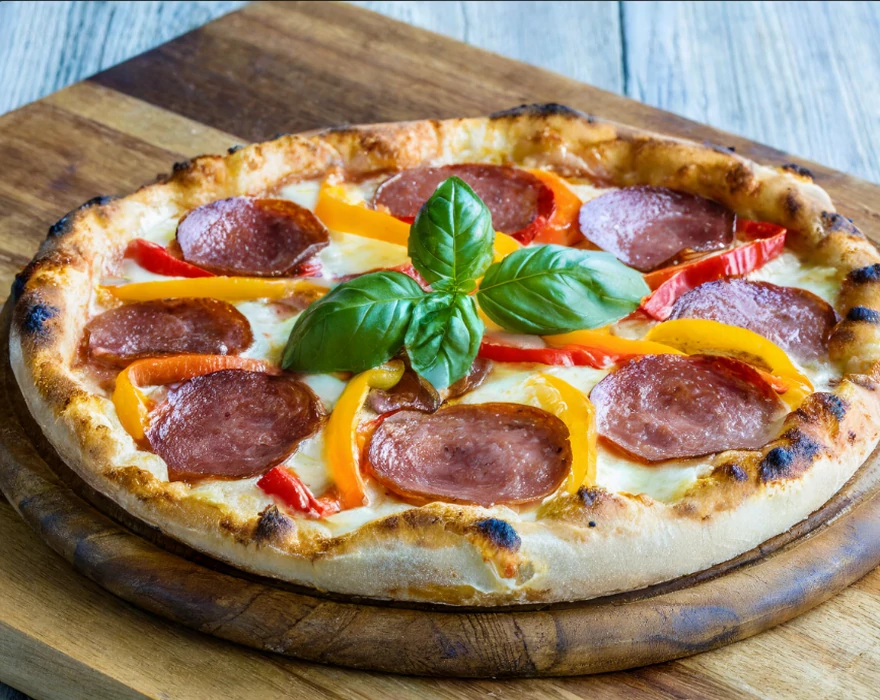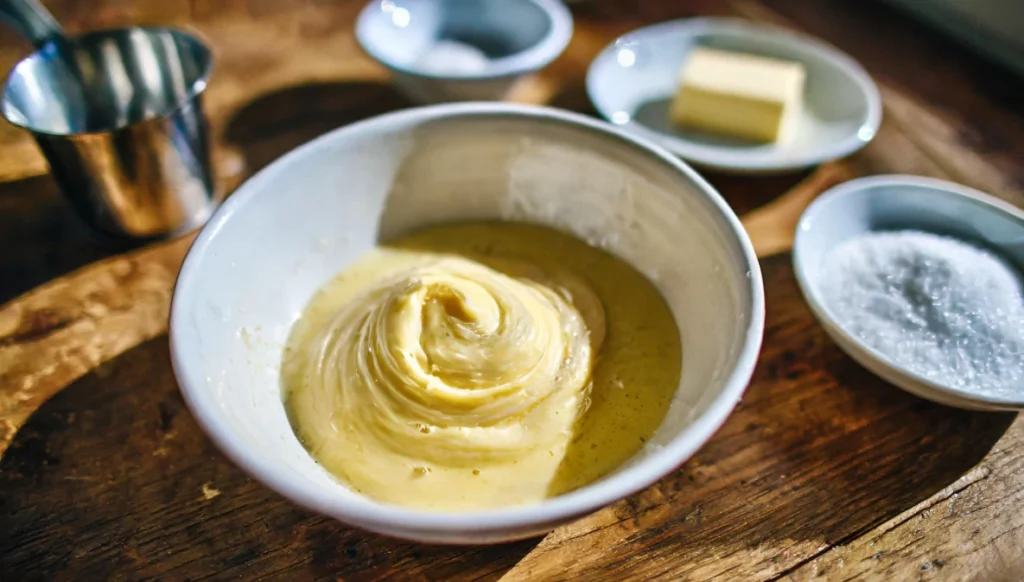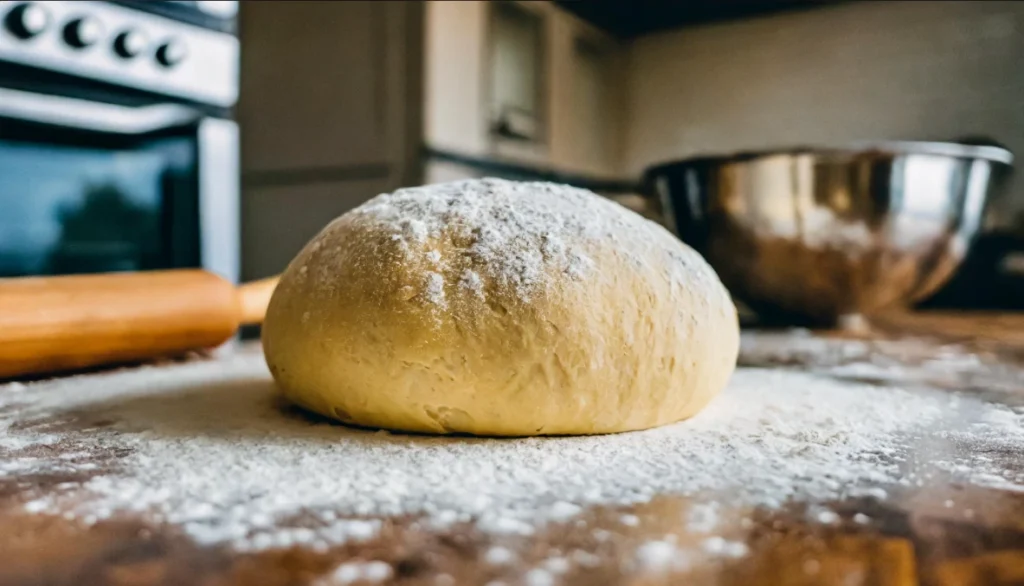
Introduction to Butter Crust Pizza
Butter crust pizza has become a cornerstone of the pizza world, renowned for its rich flavor and perfectly tender yet crispy crust. This indulgence transforms the ordinary pizza experience into something spectacular, with the butter adding a luxurious depth that can’t be matched by traditional crusts. The allure of it lies not just in its taste but in its unique texture, combining the heartiness of a good pizza base with a melt-in-your-mouth buttery finish.
History of Butter Crust Pizza
The origins of butter crust pizza trace back to the hearty, deep-dish pizzas of Chicago. Here, inventive chefs began experimenting with butter in the dough, seeking to enhance the flavor and texture. This culinary innovation quickly gained popularity, setting a new standard for pizza lovers. The butter crust pizza became synonymous with Chicago-style pizza, celebrated for its thick, buttery base that supports a generous layering of toppings and sauce. Discover the authentic Chicago-style deep-dish pizza recipe on Sally’s Baking Addiction.
Why Butter Crust?
Choosing butter as a primary ingredient in pizza crust dough brings several benefits, making it a superior choice for pizza aficionados. The butter enriches the dough, providing a flavor complexity and a delicate crumb that olive oil or shortening simply can’t replicate. Moreover, the melting point of butter contributes to a flakier, more tender crust, elevating the pizza from a simple meal to a gourmet experience.
- The addition of butter enhances the dough’s flavor, offering a subtle richness.
- Butter’s unique properties contribute to a tender, flaky crust, setting butter crust pizza apart from other styles.
- This culinary choice reflects a blend of tradition and innovation, preserving the essence of pizza while introducing a luxurious twist.
For further exploration into the role of butter in pizza dough, check out the Chicago-Style Butter and Garlic Pizza Crust Recipe on Food.com.
Making Butter Crust Pizza
Ingredients and Preparation

Creating the perfect butter crust pizza starts with selecting high-quality ingredients. Here’s what you’ll need:
- Butter: The star ingredient, unsalted butter, ensures a rich flavor.
- Flour: All-purpose or bread flour provides the dough with the right structure.
- Yeast: Active dry yeast helps the dough rise and develop flavor.
- Water: Lukewarm water activates the yeast.
- Salt: Enhances the overall flavor of the crust.
- Sugar: A small amount helps to feed the yeast and brown the crust.
Preparation Steps:

- Combine lukewarm water, yeast, and sugar in a bowl, allowing the yeast to activate.
- Mix in melted butter, flour, and salt until the dough starts to come together.
- Knead the dough on a floured surface until smooth and elastic.
- Let the dough rise in a warm place until doubled in size.
Toppings and Variations
The versatility of this recipe allows for a wide range of toppings. Whether you prefer classic combinations or innovative flavors, the buttery base complements them all. Here are some suggestions:
- Classic Pepperoni: A timeless choice that pairs beautifully with the rich crust.
- Vegetarian Delight: A mix of bell peppers, onions, mushrooms, and olives.
- BBQ Chicken: Tangy BBQ sauce, grilled chicken, onions, and cilantro for a flavorful twist.
Cooking Techniques
Baking the perfect pizza requires attention to detail:
- Preheat your oven to its highest setting, using a pizza stone or baking sheet.
- Stretch the dough gently to avoid tearing, creating a uniform base for toppings.
- Bake until the crust is golden and the cheese is bubbling, typically 10-15 minutes.
Serving and Pairing
Serving is an art. Slice it into generous pieces and consider pairing it with:
- Salads: A crisp salad, like the smashed broccoli recipe, complements the richness of the pizza.
- Drinks: Light beers or a sparkling soda can cleanse the palate between bites.
FAQs
- Should you butter pizza crust before or after baking?
Brushing the crust with melted butter before baking can add flavor and help achieve a golden finish. Post-baking, a light brush can enhance flavor and add shine. - What are 3 pizza crust alternatives?
For those seeking different bases, alternatives include cauliflower crust, whole wheat crust, and gluten-free options, each offering a unique texture and flavor profile. - What makes a pizza Chicago style?
Chicago-style pizza is known for its deep dish, with a high edge and a thick layer of toppings, and of course, its signature butter crust. - Can you use butter in pizza dough instead of oil?
Yes, butter can be used in pizza dough to impart a richer flavor and tender texture, distinguishing it from traditional crusts.
Creating a butter crust pizza is more than just a culinary process; it’s an art that brings together rich flavors, indulgent textures, and a touch of gourmet sophistication. Whether you’re a seasoned chef or a home cook looking to impress, mastering the recipe is a journey worth taking. Explore the delicious world of pizza and expand your culinary repertoire with this buttery delight.

Mastering Butter Crust Pizza: Tips & Toppings
Ingredients
- 2 cups all-purpose flour
- 1 packet about 2¼ teaspoons active dry yeast
- 1 teaspoon sugar
- ¾ cup lukewarm water
- 3 tablespoons unsalted butter melted
- 1 teaspoon salt
- Your choice of pizza toppings sauce, cheese, meats, vegetables, etc.
Instructions
1. Prepare the Yeast Mixture:
- In a small bowl, dissolve the sugar in lukewarm water.
- Sprinkle the yeast over the water and let it sit for about 5 minutes, until the mixture is frothy.
2. Mix the Dough:
- In a large mixing bowl, combine the flour and salt.
- Add the melted butter and the yeast mixture to the flour.
- Mix until a soft dough forms. If the dough is too sticky, add a little more flour; if it’s too dry, add a bit more water.
3. Knead the Dough:
- Turn the dough out onto a floured surface.
- Knead for about 7-10 minutes, until the dough is smooth and elastic.
- Form the dough into a ball.
4. Let the Dough Rise:
- Place the dough in a lightly oiled bowl and cover with a clean cloth.
- Let it rise in a warm, draft-free place for about 1 hour, or until it has doubled in size.
5. Preheat the Oven:
- About 15 minutes before the dough is done rising, preheat your oven to 475°F (245°C). If you have a pizza stone, place it in the oven to preheat as well.
6. Shape the Pizza:
- Once the dough has risen, punch it down gently and turn it out onto a floured surface.
- Roll or stretch the dough into your desired shape, about 12 inches in diameter for a traditional round pizza.
7. Add Toppings:
- Transfer the shaped dough to a piece of parchment paper for easy transfer to the oven.
- Spread a thin layer of your favorite pizza sauce over the crust, leaving a small border around the edges.
- Add your choice of toppings, finishing with a generous amount of cheese.
8. Bake the Pizza:
- Transfer the pizza (on the parchment paper) to your preheated oven or pizza stone.
- Bake for about 12-15 minutes, or until the crust is golden and the cheese is bubbly and starting to brown.
9. Serve and Enjoy:
- Carefully remove the pizza from the oven and let it cool for a few minutes.
- Slice, serve, and enjoy your homemade butter crust pizza!
